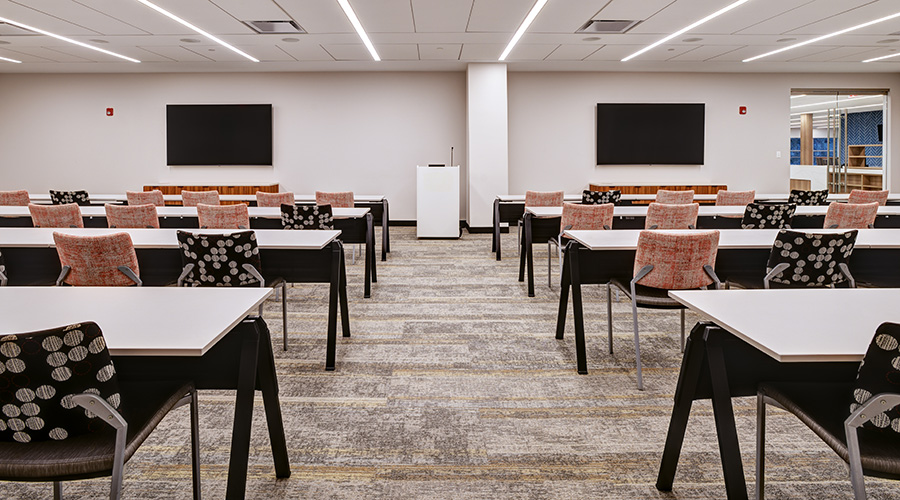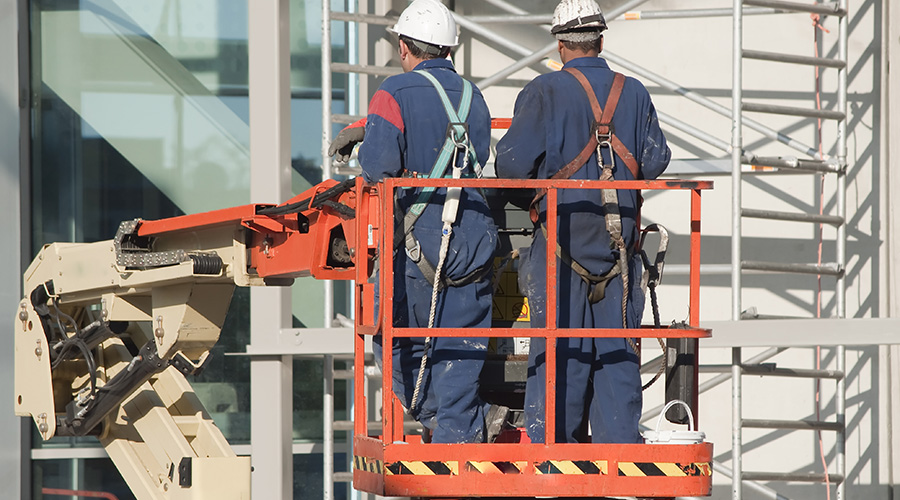Maximizing Resilience Against Extreme Weather
A facility's level of preparedness is often the defining factor that separates a swift recovery from costly damages
By Joseph Scaretta, Contributing Writer
Preparing for extreme weather events is an inevitable and integral aspect of facilities management. From unexpected storms to the long-term effects of climate change, facilities managers and building owners face a multifaceted challenge in safeguarding their buildings and ensuring the safety of occupants.
Whether the challenge is sudden and major flooding, a prolonged heatwave or a destructive hurricane, a facility’s level of preparedness is often the defining factor that separates a swift recovery from costly damages. Facility managers and owners armed with a comprehensive checklist will have the knowledge and necessary tools to navigate the complexities of weather-related challenges.
Building weather resilience
Conducting a thorough risk assessment is the first step in laying a solid groundwork for effective extreme weather preparedness. This critical process involves key stakeholder engagement in identifying vulnerabilities and hazards associated with the facility’s location, building structure and surrounding environment. By gaining insight into these specific risks, managers can strategically allocate resources to proactively address potential weaknesses to enhance overall resilience.
Once potential risks have been identified, it is time to develop a detailed emergency preparedness plan that covers various severe weather scenarios. This plan should outline clear and concise evacuation procedures, safety protocols, communication strategies and contingency plans. By establishing well-defined protocols, managers can minimize confusion through swift, coordinated action during crises to ensure the protection of both occupants and building assets.
Regular maintenance and inspections are also essential for the ongoing integrity of a facility's infrastructure and systems. From roofs and windows to drainage systems and HVAC units, routine checks enable the early detection and rectification of issues before they escalate into more significant problems. By prioritizing proactive maintenance, facilities can reinforce event readiness.
Common preparedness oversights
Facilities managers and owners also need to be cognizant of common missteps to avoid that can weaken the impact and efficiency of even the most robust emergency preparedness checklist.
One such error is overlooking the significance of communication during inclement conditions. Clear and effective communication channels are essential for disseminating information to staff, tenants and emergency responders. Weaving in multiple communication methods to deploy when a harsh storm hits ensures vital updates reach all relevant parties in a prompt and streamlined manner.
Many managers and owners also underestimate the long-term and shifting dynamics of natural disasters. They must factor in the evolving risks posed by the increased frequency and intensity of extreme weather events.
Finally, the importance of planning for business continuity amid weather-related disruptions is often left out of the equation. An expansive business continuity plan allows for the maintenance of essential services, minimizing downtime and mitigating financial losses. By prioritizing continuity strategies, facilities can navigate through or recover from a crisis with more proficiency.
Resilience and maintenance technology
Implementing specialized maintenance practices is crucial in fortifying institutional and commercial facilities against harsh conditions. These practices might include:
Weatherproofing and insulation. Weatherproofing and insulation are essential practices for mitigating the impact of destructive weather on multi-site facilities. This approach includes sealing gaps and cracks in building envelopes, installing weatherstripping on doors and windows and adding insulation to walls, roofs and attics. Proper insulation helps maintain a consistent indoor temperature, reduces energy use and protects against extreme heat and cold.
Roof maintenance. Roofs are especially susceptible to damage from harsh seasonal conditions like heavy rain, snow and high winds. Regular roof maintenance, including thorough inspections and prompt repairs, is essential for preventing leaks and structural damage. Enhancing roofs with weather-resistant materials such as impact-resistant shingles and reinforced membranes also can significantly bolster their durability and resilience when a destructive storm hits.
Emergency power systems. Depending on business requirements, installing either temporary or permanent emergency power systems like backup generators or uninterruptible power supply (UPS) units can help maintain central operations during power outages. These systems can provide interim power to critical equipment, including HVAC systems, communication systems and emergency lighting, ensuring minimal disruption to facility operations.
Other invaluable technologies can help managers and owners get ahead of an expected storm. Integrating advanced platforms like those provided by The National Hurricane Center (NHC) provide facilities with direct access to real-time weather information and predictive analytics, allowing for proactive decision-making in response to impending threats. By combining specialized maintenance practices with cutting-edge technologies, managers can further reinforce their facilities’ defenses while minimizing impact on operations and occupants.
Partnering for resilience
Entering a collaborative partnership with a trusted facilities maintenance provider can create even more layers of protection in a hazardous weather preparation strategy. Understanding that various stakeholders and service providers are often involved, a partner can collaborate with trades and general maintenance crews to ensure all systems within the facility are functioning optimally and are resilient enough to withstand severe weather patterns.
A key aspect of this collaboration is conducting thorough risk assessments and strategic planning. Firms conduct comprehensive risk assessments to identify vulnerabilities within the building’s services. This process includes assessing critical systems, such as electrical infrastructure, plumbing and other core services. Based on these assessments, they develop detailed plans and protocols to address weaknesses and minimize the impact of intense weather on these systems.
Regular maintenance and inspections can ensure the ongoing effectiveness of interior services. Routine checks conducted on critical systems, including electrical panels, plumbing systems, doors and glass help identify potential issues early and allow for prompt repairs or replacements before major weather events occur.
In addition to proactive maintenance, a partner can also support the development of emergency response plans and contingency strategies tailored to each facility's business continuity needs. This approach includes installing backup power systems, establishing protocols for shutting down non-essential services during emergencies and maintaining clear communication channels with service providers and management teams to address problems that arise.
Employee training and awareness programs are integral to ensuring that facility occupants are prepared for severe weather patterns. Many firms offer training and onboarding support for operating critical systems efficiently, reporting issues promptly and understanding the role of facility maintenance services in overall event preparedness — allowing employees to contribute effectively to the building’s resilience and response efforts during adverse weather conditions.
Having a comprehensive preparation checklist for extreme weather events equips facility owners and managers with the knowledge and tools needed to navigate the complexities of weather-related challenges. From conducting thorough risk assessments to developing detailed emergency preparedness plans, every step is essential in bolstering facility resilience.
In an era with less predictable and more intense climate events and evolving risks, proactive preparedness is not just a task but a responsibility — one that owners and managers must tackle head-on to ensure occupant safety and the resilience of their physical assets.
Joe Scaretta is a co-CEO and founder of CS Hudson, a nationwide facility maintenance and capital renovation firm.
Related Topics:












